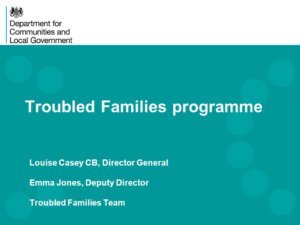Power BI & Ofted Inspections
Introduction

Power BI is a business analytics service provided by Microsoft. In a previous article it has been demonstrated how Power BI can be incorporated Microsoft Teams, a collaborative workspace platform, to provide continual performance and finance related data. This article will attempt to use Microsoft Power BI to highlight or solve some relevant performance related issues and quotes within Croydon Council’s latest Ofted inspection of Children’s Services. The report is available here. Full information on Ofsted’s findings on Croydon Council over the years can be found here.
All reports shown on this page are interactive, some have multiple pages. They are Microsoft PowerBI reports generated for the purpose of this article. All were made within the context of quotes taken from Ofted’s findings.
102. Croydon has taken action following the JTAI to strengthen performance information and this has resulted improved performance management data. This includes a monthly dashboard, performance clinics and performance meetings…
Some managers do not understand performance data and, as a result, there are gap in key areas of performance oversight, such as missing children. Performance management is therefore not informing practice improvement sufficiently
127. Recent action has strengthened the multi-agency performance management information. This is a positive development as it includes the new monthly dashboard and shared database.
- On Page One we can see that Team 3, probably due to their below average staff size, also has the best supervision frequency as well as the longest average staff employment times.
- In the report above (page two and three) we can see dashboard information that includes data from external stakeholders (Police, Youth Offending, Government Benefit Schemes)
- We can also use external data, compared against internal data created by social services, to generate valuable quantitative data.
- Power BI reports can also contextualise filtered data.
- For example, clicking on the “yes” pie segment for those at risk of domestic violence, reveals the same report page displaying if any of those considered at risk have missing records, the social workers involved and their average visitation frequency and so on….
- On Page Three we can see that there is a large percentage of Crime Assessments that have not been completed. Many were for very serious crimes (types of common assault)
Construction of Data
There are 2000 records surrounding Social Work staff and children’s involvement with Social Services and related entities. All randomized sample data. For the curious, Mockaroo.com has functionality to create your own dataset based on a wealth of information. GeoMidPoint.com generated all logitute/latitude data within a radius set within Croydon. Various Excel formula of varying complexity was used to randomise parameters that Mockaroo couldn’t. A common excel function being RANDBETWEEN(top,bottom).
Caveats
This means that all referrals have, among other things: possible Child in Need start and end dates, possible pathway plan completion dates, possible income support start dates (for a parent). The formula created will generate a fairly cohesive child/family record. For example, only children that have committed crimes could have a possible crime assessment completion date. But due to the data being random within these parameters they may not be perfect.
111. …Some social workers, in some teams, have high caseloads and very low morale…
112. …More work is therefore required to ensure that there is a more stable workforce, particularly for children in need and those on child protection plans…
More Information

The type of child/family related data I chose to generate was based on indicators set by the UK Government’s Troubled Families Initiative. A data collation exercize enforced by the Government, it is a job I have had previously and is used to highlight children and families that may be
More information on this can be found on the UK government’s website here
